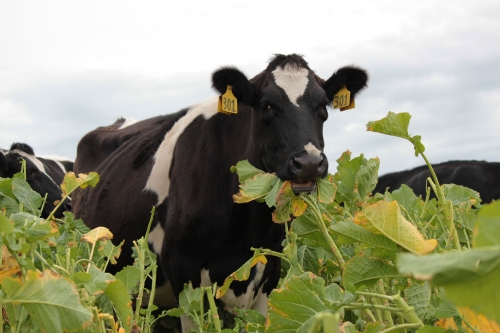I want to...
Current filter: Most popular
A to Z
Apply for a job
Biosecurity
Consents
Consultation
Contact Us
Environmental Data
Farmers Hub
Fix it or Report it
Information Request
Join an Event
Leasehold Land
Meetings
Rates
Water Metering
Have Your Say
It’s time to put together a winter grazing plan
Published: 18 May 2021

The Hawke’s Bay Regional Council is encouraging farmers who graze stock on fodder crops over winter to put together a plan now to ensure that livestock maintain body condition and minimise soil damage.
Manager of Catchments Policy Implementation, Brendan Powell, says winter is an important time to ensure sufficient feeding levels, and a winter grazing plan is critical, particularly given the dry conditions of the region.
“Now is a good time to put together a plan to ensure livestock are well fed, so farmers can meet production targets, and to minimise contaminant loss to the environment.”
Grazing of winter crops can contribute disproportionately to nitrogen, phosphorus, and bacteria such as E.coli entering waterways, and soil loss, he says.
The Regional Council has some tips for making a plan:
- Gather information about the elements that will impact on your winter crops like livestock numbers and classs, feed systems, and whether you will feed out supplementary feed
- Identify risks, such as critical source areas, slope, erosion and potential for contaminants to enter waterways
- Develop a map with your crop location, grazing zones, grazing direction and where your water troughs are and your critical source areas
These tips will help with planning how to minimise effects on water. Simple actions such as beginning grazing at the end of the paddock most distant from waterways, or planning ahead for what to do in an adverse weather event will have a big impact on the level of losses to water.
“Once you’ve made a plan – follow it. Three or four weeks in to grazing, check your plan and see if you are on track and whether stock will be on the crop for a longer or shorter time than you thought,” says Mr Powell.
From 2022, all farmers who graze stock on fodder stocks over winter will need to have a documented winter grazing plan, and this will form part of the national freshwater farm plan requirements in the future.
In March this year, the Ministry for the Environment deferred intensive winter regulations for a year until 1 May 2022. The Regional Council is working with primary industry groups to support farmers to meet good management practices for winter crops.
The Ministry for Primary Industries (MPI), Ministry for the Environment (MfE), councils and industry representatives, have developed an online tool to help improve practices to benefit freshwater quality and animal welfare.
This includes an easy-to-use template for farmers who don’t already have a written plan for their winter grazing.
You can access the template here.
For more general information about intensive winter grazing, go to hbrc.govt.nz and search #iwg
Disclaimers and Copyright
While every endeavour has been taken by the Hawke's Bay Regional Council to ensure that the information on this website is
accurate and up to date, Hawke's Bay Regional Council shall not be liable for any loss suffered through the use, directly or indirectly, of information on this website. Information contained has been assembled in good faith.
Some of the information available in this site is from the New Zealand Public domain and supplied by relevant
government agencies. Hawke's Bay Regional Council cannot accept any liability for its accuracy or content.
Portions of the information and material on this site, including data, pages, documents, online
graphics and images are protected by copyright, unless specifically notified to the contrary. Externally sourced
information or material is copyright to the respective provider.
© Hawke's Bay Regional Council - www.hbrc.govt.nz / +64 6 835 9200 / info@hbrc.govt.nz


